Recent Articles
Popular Makes
Body Types
2016 Kia Soul EV Road Test and Review
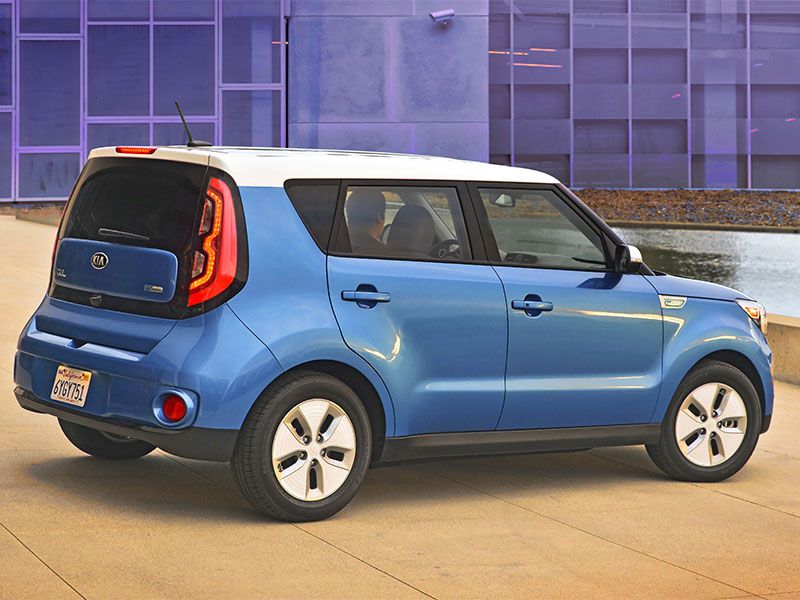
2016 Kia Soul EV rear angle view ・ Photo by Kia
Kia has given us a lot of reasons to like the Kia Soul, from its unique boxy shape to its roomy and space-efficient cabin. Here's another reason you might not know about: Kia makes an all-electric version called the Soul EV, which is sold in 10 states: CA, CT, GA, HI, MD, NJ, NY, OR, TX, WA. How does the Kia Soul EV compare to other battery-powered cars? Let's charge it up, take it for a drive, and find out.
Standout Styling
There are a lot of reasons to like the Soul, and styling is chief among them. Not only does the Soul's boxy shape help it to stand out in a world full of lookalike vehicles, but it's wonderfully practical, providing lots of back-seat headroom and cargo space that rivals small suvs. Kia has gone the extra mile, so to speak, with the Soul EV: If you want the world to know you are driving electric, you can get it in electric blue (pun intended) with a white roof or black with a red roof and body trim. Want something more subtle? The Soul EV also comes in gray, silver, white, and black, with only a solid grille and unique wheels to set it apart from gasolne-powered Souls. Inside, all Souls get two-tone gray upholstery (eco-cloth or leather, depending on trim level) with stitching. The shifter and stereo surrounds are made of white plastic, with a look that will be familiar to anyone who has ever purchased accessories for an iPod.
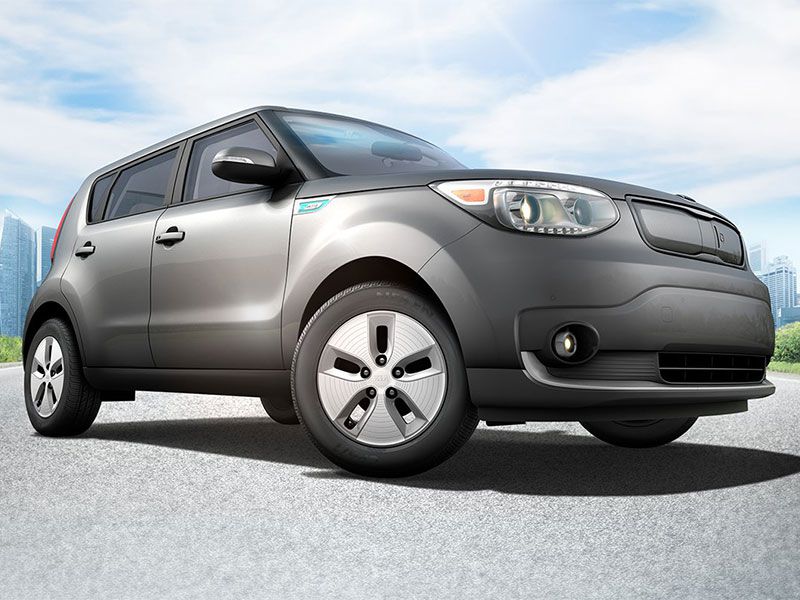
Photo by Kia
Converting from Gas to Electric
Any time a battery-powered vehicle is based on a gasoline-powered vehicle, there are bound to be some compromises. While the electric motor and its associated control gear generally fit neatly under the hood—as they do in the Soul EV—batteries are generally far more bulky than gas tanks, and squeezing them in is always a problem. Kia has done a good job: It has fit the generously sized 27 killowatt-hour (kWh) battery under the floor, where it has only a slight effect on back-seat legroom. Cargo space is unchanged compared to the gasoline-powered Soul, and both front and back seats offer the same generous headroom that makes the gasoline-powered Soul a favorite of ours.
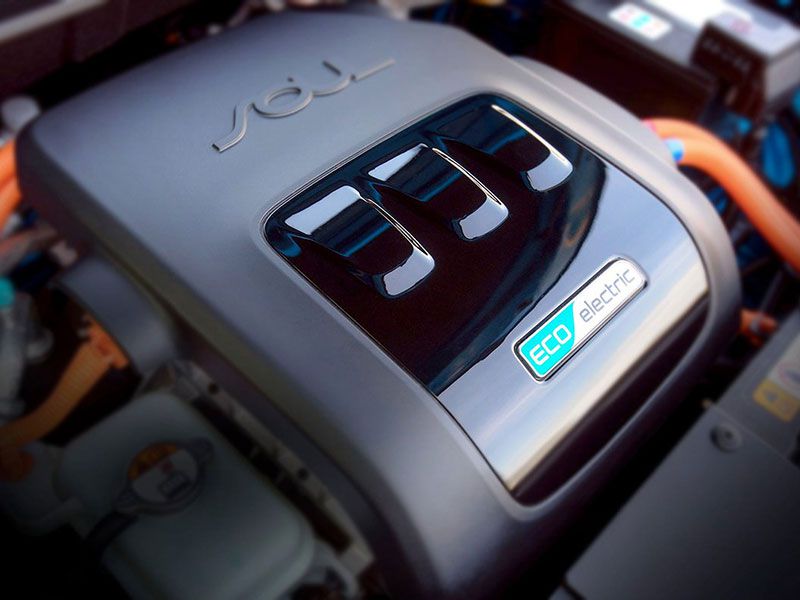
Photo by Kia
Good fun to drive, but we'd like better steering, please.
If you've driven an electric car, you'll like the Soul EV, and if you've never driven one, you're going to love it. Electric cars deliver a smooth, silent rush of power, and they are surprisingly quick: We had no problem merging onto the freeway, and even less trouble beating other cars away from the stoplights (not that we would ever do such things were we not performing a thorough evaluation in the name of journalistic integrity). The Kia Soul is a decent-handling car, and a heavy battery pack mounted under the floor does wonders for its stability—you can really fling it around the corners. Unfortunately, steering feel has never been the Kia Soul's strong point. Kia has two types of steering gear—really excellent and meh—and the South Korean company has never seen fit to install the really excellent system in the Soul. Shame, as with so much power and stability, there's good fun to be had from the Soul EV's driver seat.
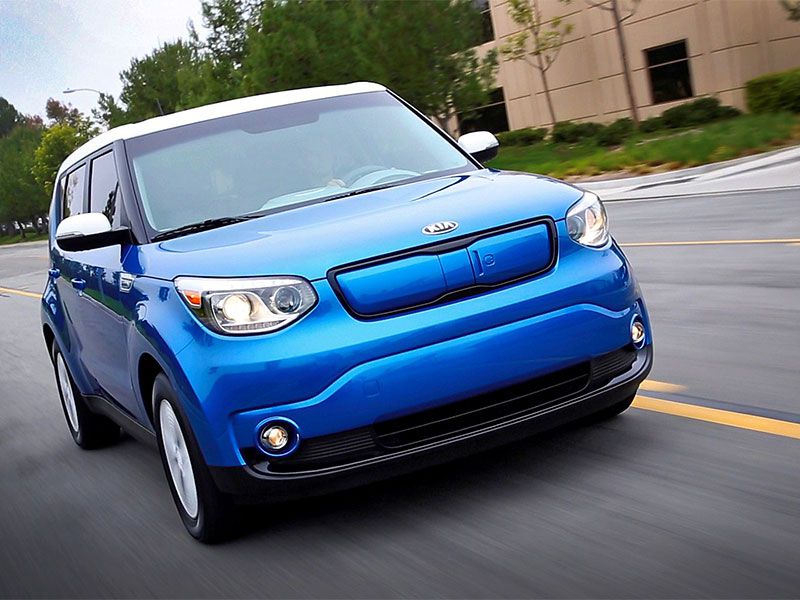
Photo by Kia
How far can it go?
When considering an electric car, one of the big questions is: “How far can it go?” The Soul's EPA-rated range of 93 miles is among the highest in the business; only the Nissan Leaf (with optional 107-mile battery) and the Tesla EVs ( significantly more expensive) will go farther, though the Volkswagen e-Golf now matches the Soul's range. During our week-long test, we frequently saw around 100 miles per charge. Two caveats here: One, the average American only drives 33 miles per day, and with at-home charging (a “full tank” every morning!), 93 miles is plenty. Two, we're on the cusp of seeing affordable EVs with much longer ranges; even as we write this, Chevrolet is preparing to launch their 238-mile Bolt EV, and we have no doubt that higher-range cars will soon follow.

Photo by Kia
Long legs, but so-so efficiency.
It's also worth noting that while the Soul EV's range is quite good compared to the current crop of electric cars, it is not particularly energy-efficient. The EPA rates electric car efficiency by MPGe, which stands for Miles Per Gallon Equivalent. The Kia is rated at 120 MPGe in the city, which is pretty good, but only 92 MPGe on the highway. (Unlike fuel-powered cars, EVs are less efficient at higher speeds.) Its combined MPGe figure is 105, which compares poorly to the Fiat 500e (112 MPGe combined), Nissan Leaf (114 MPGe), Volkswagen e-Golf (116 MPGe), and BMW i3 (124 MPGe).
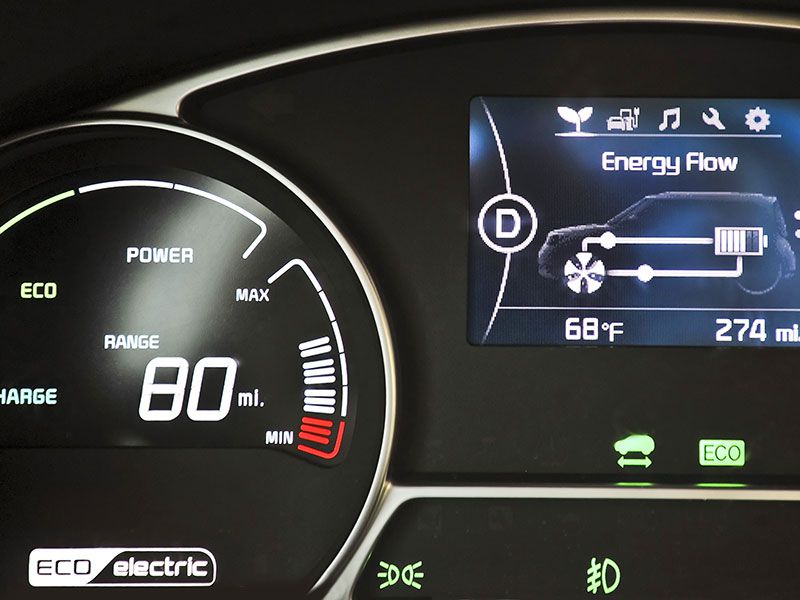
Photo by Kia
Fast charging...
One thing we like about the Kia Soul EV is that it comes standard with Level 3 fast-charging capabilities. The Soul EV uses the CHAdeMO charging standards, which has the lowest current flow of the three fast-charge systems (the others being SAE Combo, used primarily by American and European EVs, and Supercharger, Tesla's proprietary system). CHAdeMO's chief advantage is that it is the same system used by the Nissan Leaf, one of the most popular EVs on the road. Kia says the Soul EV can be fast-charged to 80 percent of its capacity in less than half an hour. The Los Angeles Department of Water and Power has installed free CHAdeMO fast chargers throughout the city, and we made extensive use of the network. With so much range per charge, we rarely ran the Soul EV anywhere near empty, and, using the fast chargers, we were able to juice it up to 85 percent or so in around 20 minutes. (Because of the nature of the charges, which slow their charging rate as the battery gets full, juicing up to 100 percent took another half hour or so.)
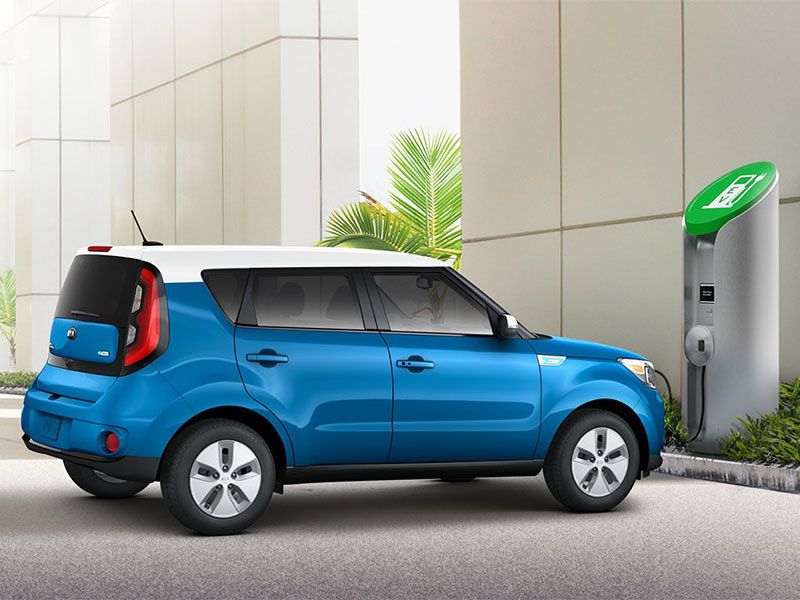
Photo by Kia
...and fast slow charging.
We expect most Soul EV buyers will install a 240-volt Level 2 charger at home using a dedicated 240-volt (Level 2) connector. The Souls onboard charging gear is a 6.6-kW system; for comparison, the base-model Nissan Leaf has a 3.3-kW charger, with a 6.6 kW unit as nan extra-cost option. (Though EV plugs are often referred to as chargers, they are really little more than connectors; the charging equipment is part of the car.) Full charge time is 5 hours, slightly longer than the 6.6-kW Leaf (4 hours) but much faster than the 3.3-kW Leaf (8 hours). The charge port is located in the middle of the Soul's nose, which makes for easy access (some EVs have their charge ports on the rear fender, which requires backing into a spot to charge). The Kia Soul EV comes with a 110-volt adapter that can charge the battery from a household outlet, but juicing up this way takes 24 hours, so it's best left to unusual situations—say, visiting far-away friends or relatives who don't have access to Level 2 or 3 charging. (Hopefully they've invited you to spend the night.)
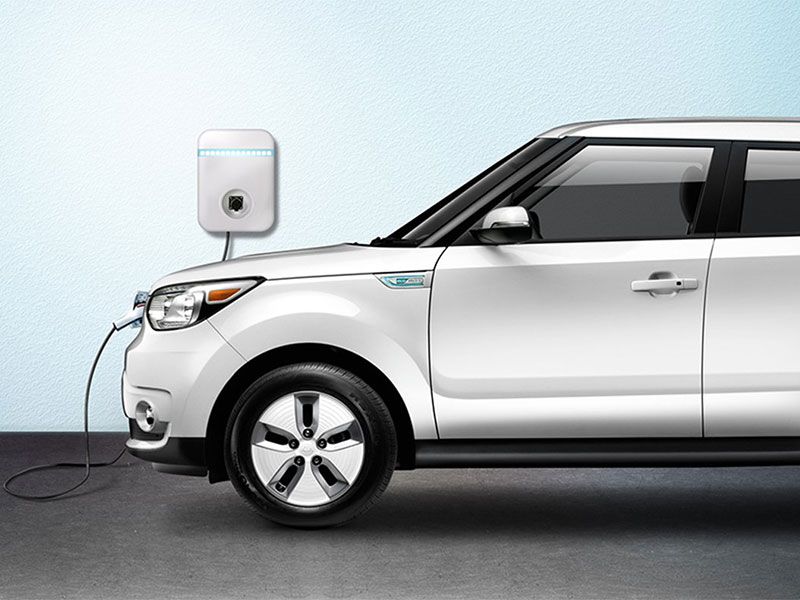
Photo by Kia
A new low-cost model for 2016.
Kia is well aware that higher-range affordable EVs are coming, so the company has taken a logical step: cutting the Soul EV's price. Sort of. For 2016, Kia is offering a new entry-level model called the Soul EV-e, priced at $32,800 ($25,300 after a $7500 Federal tax credit; state and local incentives may lower the price further). The Kia Soul EV-e does without a few of the nice-to-haves found in the EV and EV+ models: No display stereo, no rearview camera, no turn signals on the mirrors. But it does get the same 27-kWh battery, 6.6-kW charging equipment, and fast-charging capability, and that's what really counts. Is there a catch? Yes there is, and it's a big one: The EV-e model is only sold in California. For the rest of the country, the least-expensive Soul costs $34,800 ($27,300 after the Federal tax credit).
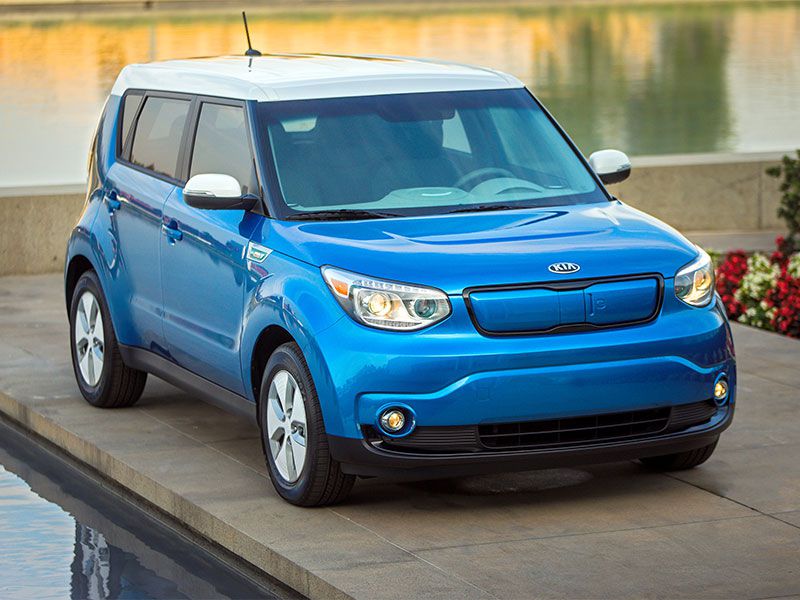
Photo by Kia
Soul EV Versus the Competition
There are several good EVs to choose from; among them, we like the Volkswagen e-Golf for its utility, the Nissan Leaf for its posh interior, the Chevrolet Spark EV for its speed and efficiency, and the Mitsubishi i-MiEV for its ridiculously cheap price. And most—though not all—of these cars are offered in all 50 states. Unfortunately for Kia (and all of these aforementioned competitors), something awesome this way comes: Chevrolet is readying its Bolt EV for 2017, which will have a 238-mile EPA range, a price tag of around $30,000 after Federal tax incentives, and be offered for sale across the country. The Bolt EV's form factor and interior remind us quite a bit of the Soul EV, but as the Bolt is a dedicated electric car rather than a gasoline-car conversion, it doesn't have space limitations in its back seat. Now, in all honesty, we think the whole “range anxiety” thing is a bit overrated; most EV owners we know have no problems whatsoever with the 100-ish mile range of their EVs. But a couple hundred miles of range opens up a lot of possibilities, and many buyers might think it's worth considering the extra $3000 (or $5000 for Californians) to step up from a Soul to a Bolt. Still, range aside, we think the Kia Soul EV is an excellent electric car and a stylish way to reduce our nation's reliance on fossil fuels.
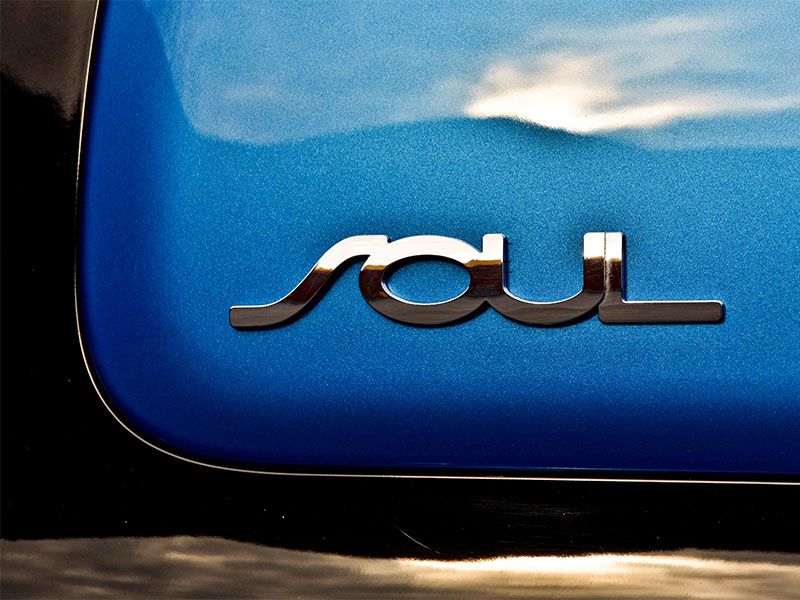
Photo by Kia